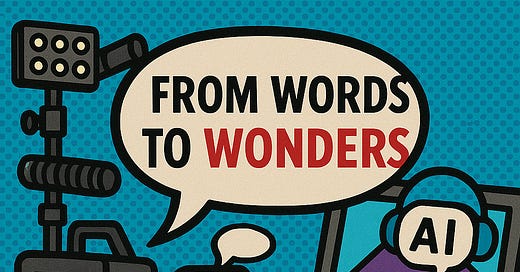From Words to Wonders: How a Creative Video Generation Agent Turns Input into Art.
System Prompt Design Principles and Core Strategies for Developing a Creative Video Generation Agent
An AI video generation agent is not just a tool that produces visuals based on input commands. It is a sophisticated system designed to understand the user’s imagination and creative goals, and translate them into visual outputs.
At the heart of this system lies carefully crafted system prompt design.
Below, I explain the key principles and strategies using real-world examples.
Refined Interpretation of User Intent
An AI cannot create truly creative videos if it simply follows user commands as-is.
For example, when a user requests, “Show me a futuristic city nightscape,”
system prompt design should not just pass along keywords — it should transform them into commands that reflect the user’s emotions, style, and intentions.
✅ Strategic Example:
Input: “Futuristic city nightscape”
Prompt transformation: “Create a futuristic city nightscape with surreal color tones, neon light emphasis, drone perspective, and Blade Runner-inspired style.”
This approach translates vague requests into detailed, actionable prompts.
Integration and Optimization of Multimodal Elements
Video generation involves the combination of text, images, music, motion, and more —
a complex multimodal task.
Therefore, system prompt design must go beyond single-task commands and
link the prompts for each element so they work together cohesively.
✅ Strategic Example:
Visual prompt: “Purple twilight sky, floating vehicles, dazzling neon signs”
Sound prompt: “Mysterious electronic music with strong bass”
Motion prompt: “Smooth transitions like a drone camera, natural zoom in/out”
Each part must be modularly designed and interconnected to raise the final output’s quality.
Managing Constraints and System Resources
Creative videos can consume significant AI resources.
Thus, it’s critical to account for token limits, model processing capacity, and output format constraints when designing prompts.
✅ Strategic Example:
Instead of long visual descriptions, call up “style reference” images or pre-existing datasets.
Break work into clips shorter than 60 seconds, then stitch them together with post-processing prompts.
This kind of approach is a prime example of system prompt design optimizing efficiency and performance.
Iterative Learning and Prompt Improvement Loop
Perfect results rarely come on the first try.
System prompt design should build in a loop that incorporates user feedback for continuous improvement.
✅ Strategic Example:
First output: Initial AI-generated video
Feedback prompt: “Please add warmer color tones,” “The camera movement is too fast”
Second output: Revised video reflecting feedback
Such improvement loops can be automated, evolving into dynamic system prompt designs that enhance user satisfaction.
Experimental Prompt Design to Promote Creativity
A video generation agent should help users go beyond their own imagination.
That’s why system prompt design must sometimes include surprise elements, randomness, or experimental approaches.
✅ Strategic Example:
“Offer three creative variations from the same prompt.”
“Generate a reinterpretation of the theme in a completely different style.”
This experimental design pushes the AI to unleash its full creative potential.
Conclusion
The success of a creative video generation agent depends on how meticulously the system prompts are designed.
Helping the AI understand user imagination and pushing it beyond current limits
ultimately comes down to thoughtful design, iterative optimization, and experimental creativity.
Applying these principles in real-world projects can elevate an AI from being just a tool to becoming a true creative partner.



